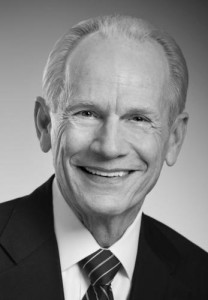Opinion
Gov’t rules fuel hospital prices
Hospital pricing is a hot topic of discussion in the media, fueled by recent reports over confusing prices reflected on patient bills. This is not a new development, rather the latest news cycle revisiting an issue that hospitals have been grappling with for decades.
California hospitals recognize that the current pricing model must be reformed. As President/CEO of the California Hospital Association, I know that hospital leaders throughout the state have been working collaboratively to adopt a modern pricing model that will result in lower charges.
Remarkably, no patient actually pays the charges listed on the charge master.
Just as patients don’t want to see a $15 charge for an aspirin on their hospital bill, hospitals don’t want to charge patients those prices. Hospital pricing has evolved because of decades of government regulations, cost shifts to private payers and unfunded government mandates (including expensive seismic retrofitting), inadequate Medicare and Medicaid reimbursements, and the obligation for hospitals to treat all patients, regardless of ability to pay.
There is a large disparity between hospital charges and what is actually paid by Medicare, Medi-Cal, health plans and individual patients.

C. Duane Dauner
Medicare pays hospitals a fixed amount per service, based on diagnosis-related groups (DRGs), while California’s Medi-Cal program pays hospitals based on fixed rates. Neither governmental program uses the charge master to determine regular hospital payments. The same is true for commercial health plans, which typically pay hospitals based on negotiated contract rates or specific discount arrangements.
Patients who receive a hospital bill based on a charge master generally are not represented by a third party payer (e.g. the uninsured.) And, under California’s Fair Hospital Pricing Policies (AB 774, 2006), every hospital in the state is mandated to offer free or discounted care to uninsured or underinsured patients earning up to 350 percent of the federal poverty level (FPL). Many California hospitals have far more generous policies – allowing individuals earning as much as 500 percent of FPL to qualify for free or discounted care.
Thus, virtually no patient actually pays the charges listed on the charge master.
Hospitals understand that the current billing system is confusing to consumers
In 2012, California hospitals provided more than $13 billion in uncompensated care. In addition, Medicare payment cuts totaling $22 billion will be imposed on California hospitals over the next 9 years. These payment shortfalls limit hospitals’ ability to meet patient needs.
Hospital prices can vary based on a number of factors including location, payer mix, unique services, emergence of new medical technology, workforce shortages, and patient demographics. Hospitals providing medical education, highly-specialized trauma or other high-cost services such as burn units will have different costs than those that don’t. And, just like a person’s cost of living, the cost to operate a hospital in San Francisco is different than the cost to operate the same facility in the Central Valley.
California’s hospitals understand that the current billing system is confusing to consumers. Hospitals support realistic pricing policies that are based on the alignment of clinical and financial incentives, and balance the demand and supply sides of the health care equation.
—
Ed’s Note: C. Duane Dauner is president of the California Hospital Association.
Want to see more stories like this? Sign up for The Roundup, the free daily newsletter about California politics from the editors of Capitol Weekly. Stay up to date on the news you need to know.
Sign up below, then look for a confirmation email in your inbox.

Leave a Reply